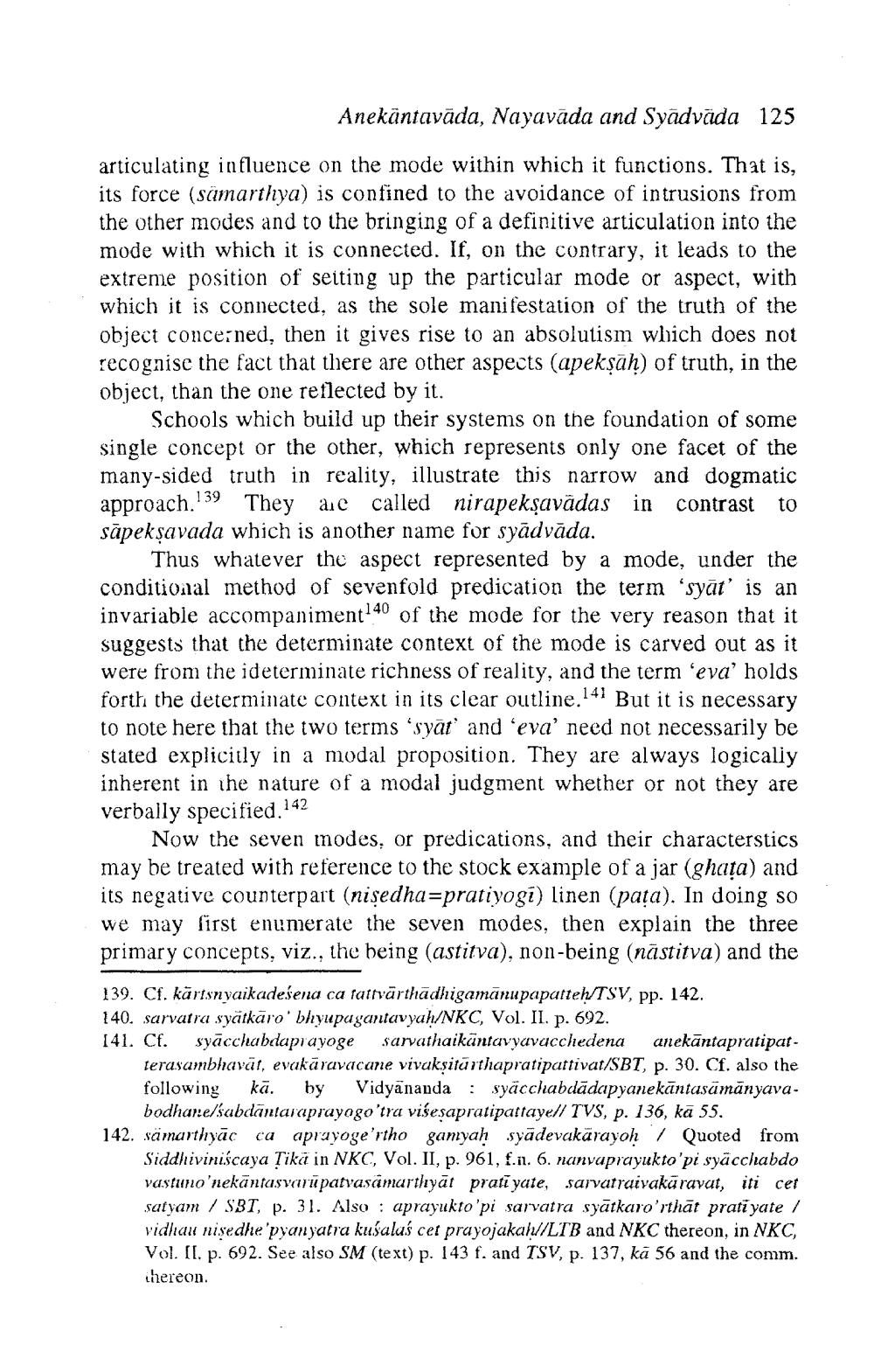________________
Anekāntavāda, Nayavāda and Syadvāda 125
articulating influence on the mode within which it functions. That is, its force (samarthya) is confined to the avoidance of intrusions from the other modes and to the bringing of a definitive articulation into the mode with which it is connected. If, on the contrary, it leads to the extreme position of seiting up the particular mode or aspect, with which it is connected, as the sole manifestation of the tru object concerned, then it gives rise to an absolutism which does not recognise the fact that there are other aspects (apekṣaḥ) of truth, in the object, than the one reflected by it.
Schools which build up their systems on the foundation of some single concept or the other, which represents only one facet of the many-sided truth in reality, illustrate this narrow and dogmatic approach. 39 They are called nirapeksavādas in contrast to sāpekṣavada which is another name for syādvāda.
Thus whatever the aspect represented by a mode, under the conditional method of sevenfold predication the term "syāt' is an invariable accompaniment?40 of the mode for the very reason that it suggests that the determinate context of the mode is carved out as it were from the ideterminate richness of reality, and the term 'eva' holds forth the determinate context in its clear outline.14. But it is necessary to note here that the two terms 'syat' and 'eva' need not necessarily be stated explicitly in a modal proposition. They are always logically inherent in the nature of a modal judgment whether or not they are verbally specified. 142
Now the seven modes, or predications, and their characterstics may be treated with reference to the stock example of a jar (ghata) and its negative counterpart (nişedha=pratiyogi) linen (pata). In doing so we may first enumerate the seven modes, then explain the three primary concepts, viz., the being (astitva), non-being (năstitva) and the
139. Cf. kārtsnyaikadesena ca fattvārthadhigamanupapatteh/TSV, pp. 142. 140. sarvatra syātkāro' bhyupagantavyah/NKC, Vol. II. p. 692. 141. Cf. syācchabdaprayoge sarvathaikāntavyavacchedena anekāntapratipat
terasambhavār, evakäravacane vivukşitúrthapratipattivat/SBT, p. 30. Cf. also the following kā. by Vidyānanda : syācchabdādapyanekāntasámányava
bodhane/sabdāntaraprayogo'tra višesapratipattayell TVS, p. 136, kā 55. 142. samarthyāc ca aprayoge'rtho ganyah syādevakārayoh / Quoted from
Siddhiviniscaya Tika in NKC, Vol. II, p. 961, f.n. 6. nanvaprayukto'pi syācchabdo vastuno'nekāntasvarüpatvasamarthyāt pratī yate, sarvatraivakaravat, iti cet satyam / S31, p. 31. Also : aprayukto'pi sarvatra syātkaro'rthāt prati yate / vidhau nisedhe 'pyan yatra kusalas cet prayojakahl/LTB and NKC thereon, in NKC, Vol. II. p. 692. See also SM (text) p. 143 f. and TSV, p. 137, kā 56 and the comm. ihereon.




